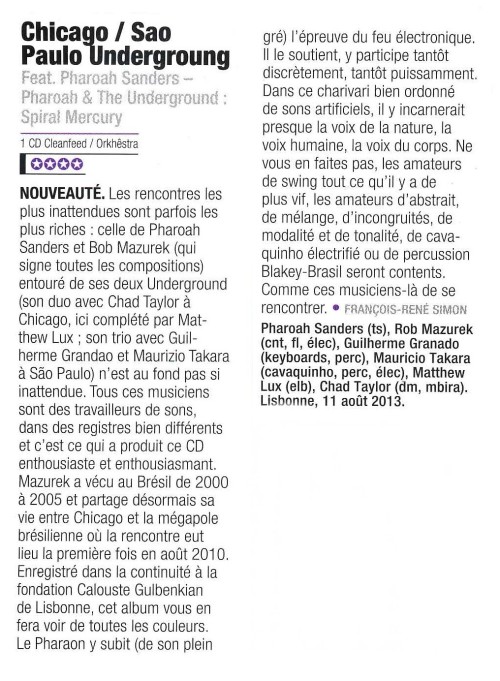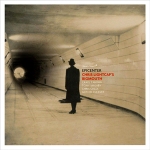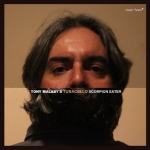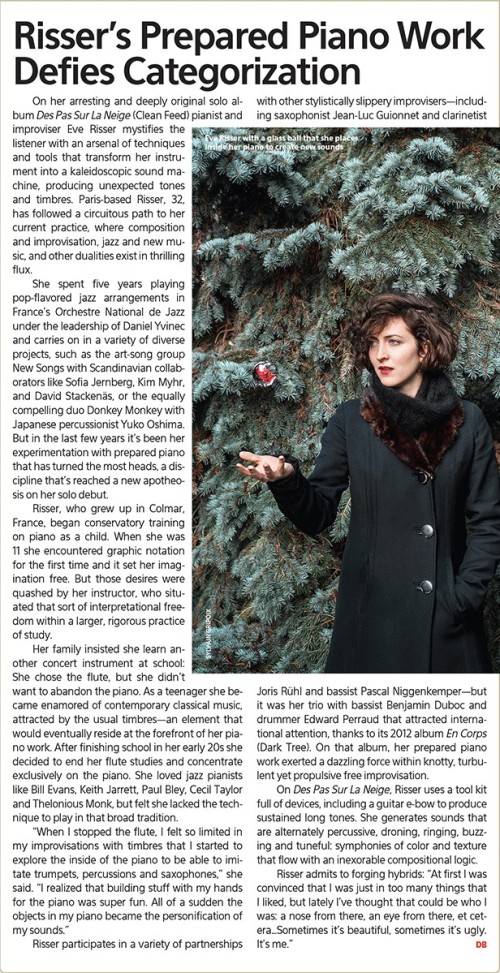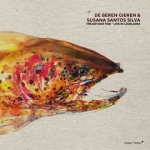 De Beren Gieren / Susana Santos Silva – The Detour Fish (Live in Ljubljana) (CF 317)
De Beren Gieren / Susana Santos Silva – The Detour Fish (Live in Ljubljana) (CF 317)
V tokratni Tolpi bumov bomo prisluhnili prvi plošči zasedbe De Beren Gieren, združene s trobentačico Susano Santos Silvo. Album z naslovom The Detour Fish je izšel pri nas že dobro poznani založbi Clean Feed. Le-ta nam v zadnjem času vse pogosteje predstavlja glasbenike, ki se gibajo nekje med jazzom in prosto improvizacijo. In tako je tudi v primeru sledečega albuma, ki je bil posnet na lanskem Jazz festivalu v Ljubljani, predstavljen pa bo jutri v okviru Cankarjevih torkov.
Ker smo se s trobentačico Susano Santos Silvo na Radiu srečali že vsaj dvakrat, sledi na tem mestu kratka predstavitev druge strani tega sodelovanja, ki nam je še nepoznana. Belgijski trio De Beren Gieren oziroma Vreščeči medvedje je združitev treh mladih glasbenikov v želji po odkrivanju novega terena na področju improvizacije. Sicer gre za standardni klavirski trio, katerega jedro je, kot po navadi, pianist Fulco Ottervanger. Na kontrabasu gode Lieven Van Pée, za bobni pa sedi Simon Segers. Trio večinoma izvaja kompozicije Fluca Ottervangerja, njihova želja pa je občinstvu pokazati, da kljub navidezni zastarelosti oziroma običajnosti klavirskega tria obstajata nov prostor in zvok, ki prinašata svežino tej zasedbi.
Sicer trio De Beren Gieren in Susana Santos Silva govorijo podoben jezik. Vsi so namreč šolani jazzerji. To se močno odraža tudi v glasbi, ki jo bomo slišali. Virtuoznost izvajalcev, še posebej Santosove, je na nekaj mestih prav osupljiva. A je na žalost velikokrat sama sebi namen. In čeprav se vsi nagibajo k prosti improvizaciji, se to najbolj odraža le v formi, ki je delno aranžirana in na drugih delih prosta. Razširjene tehnike igranja uporablja le Susana in v redkih primerih tudi basist Simon. Santos tu izčrpno izrablja celoten inštrument, ga prepihava, z njim škripa, cvili, piska in ritmizira. Njeno igranje je precizno in dobro domišljeno, a vse prehitro preide iz improviziranih odsekov v ustaljene jazzovske vzorce in fraze.
Sicer album The Detour Fish poteka kot serija pripetljajev, ki bi se lahko zgodili ribi, ki je zašla oziroma je na obvozu. Naslovi komadov, Battle with Fishelf, Under Swirling Waters, Aquarium Benefits in drugi, so izredno ilustrativni in morda jih izvajalci interpretirajo skoraj preveč dobesedno. De Beren Gieren in Santos se drugače na albumu dobro ujamejo. Glasbeni material si pogosto podajajo, še posebej pianist Fulco in trobentačica Santos, ga nadgrajujejo in glasba nas kar nekako popelje čez celoten album. Kot bi bili sami sopotniki na tej poti raziskovanja stranpoti jazza. Ob drugih priložnostih pa je glasba precej statična in se premiki dogajajo bolj v notranjosti, v malih šumih in dromljanjih posameznih akterjev. Ti momenti so še posebej zanimivi, saj se tudi Santos, ki je sicer večinoma v ospredju, potopi v zvočno gmoto in s trobento pridoda razne zanimive zvočne teksture. Na žalost takih trenutkov ni prav dosti, saj kvartet hitro preide nazaj na ustaljeno pot prevladujočega solista in harmonske osnove, ki jo po navadi nudi trio. V teh primerih pa slišimo vse od liričnih melodij preko hitrih pasaž, ki jih Santos tehnično izvrstno odigra, do ritmično osnovanih fraz, ki nas vodijo v poplesavanje ali modernejše »groovanje«.
Album The Detour Fish je posrečen spoj štirih ustvarjalcev, ki mislijo podobno. In zgoščenka resnično zveni kot zaključena celota. Obregnili bi se lahko le ob navedbo založbe, da izvajalci na tem ploščku želijo poiskati nova obzorja z obzirom na tradicijo jazza, saj večino glasbe na albumu ogrnejo prav s to tradicijo, tako harmonsko, melodično in tehnično.
http://radiostudent.si/glasba/tolpa-bumov/de-beren-gieren-susana-santos-silva-the-detour-fish-live-in-ljubljana
 Chicago/São Paulo Underground Feat. Pharoah Sanders – Pharoah & The Underground – Spiral Mercury (CF 301)
Chicago/São Paulo Underground Feat. Pharoah Sanders – Pharoah & The Underground – Spiral Mercury (CF 301)
